Recently, Jersey Digs has brought you the history behind some of the most notable ‘ghost signs’ in New Jersey’s two largest cities, Newark and Jersey City. These signs, often located on the sides of buildings throughout dense neighborhoods, are reminders of businesses and venues that once were household names in the communities in which they operated. Like other cities in New Jersey, Trenton is filled with ghost signs, from Chambersburg to Mill Hill. Here is a look at the history of the businesses and organizations advertised in some of these signs.
Workmen’s Circle/Arbeter Ring
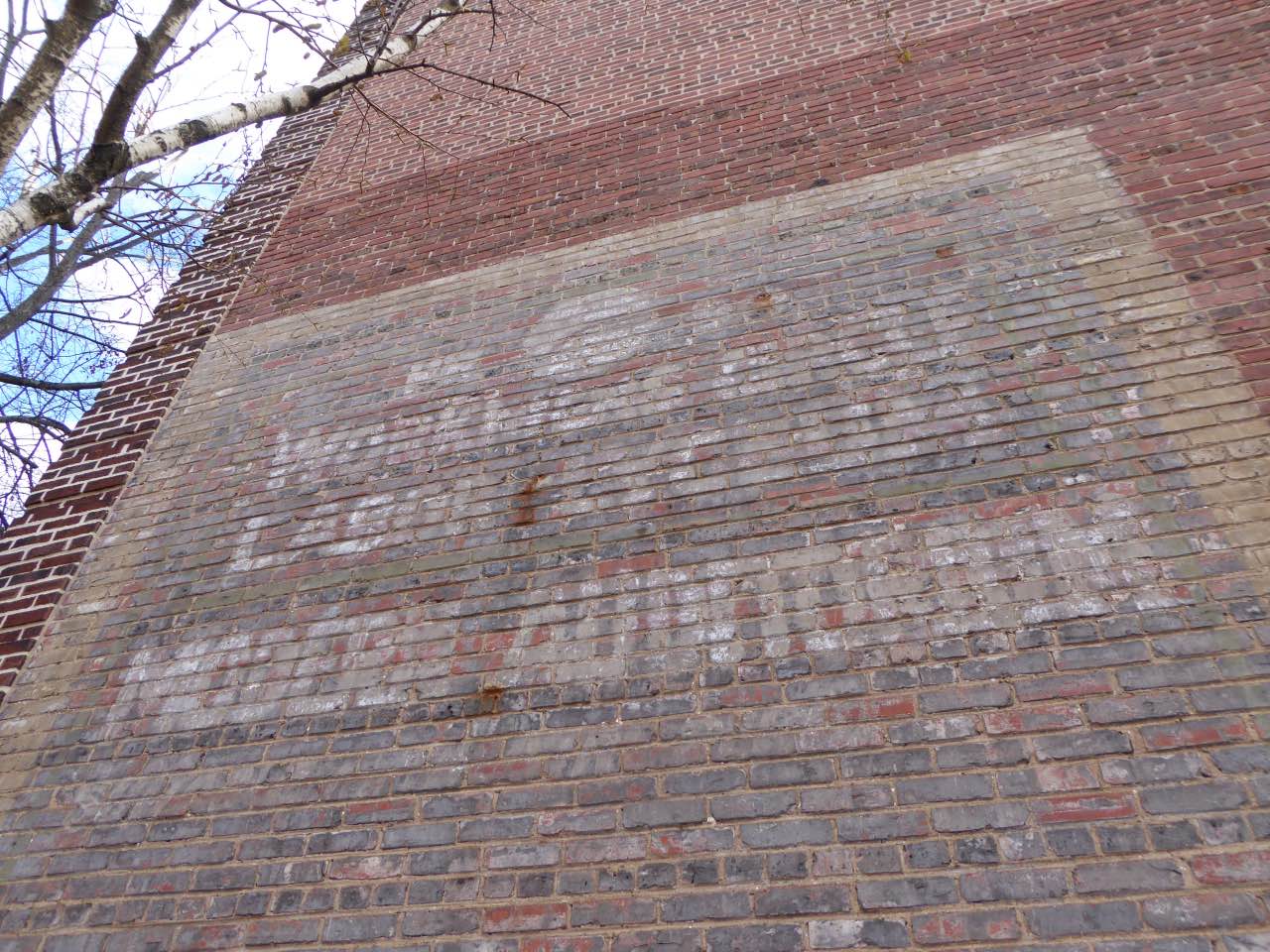
Located at 159 Mercer Street in Trenton’s Mill Hill neighborhood is a two-story building that is currently home to the Labor Lyceum Lofts Condominiums. However, signs of the building’s history still remain on the exterior. Both on the marquee in front and atop the building is a logo reading ‘A-R’, and on the side, a fading sign reads ‘Workmen’s Circle Labor Lyceum Modern Auditorium’. According to The Old Mill Hill Society, Mill Hill “remained a significant Jewish neighborhood until well into the 1940s,” and this building was constructed for the Workmen’s Circle/Arbeter Ring, a “Jewish fraternal organization that was active in the labor movement.”
A 1910 issue of The American Architect shows that “Branch No. 90 of Workmen’s Circle is considering erection of $10,000 labor Lyceum,” and six years later, according to The Old Mill Hill Society, this building opened. Before the organization had its own space on Mercer Street, a 1915 edition of the Trenton Evening Times stated that the Workmen’s Circle, described as “one of the best known of the Hebrew organizations of Trenton,” with a membership exceeding 300, held events such as an annual ball at the Arcade Academy.
Once the new building opened, local labor unions would often rent out the space, according to A Social History of Economic Decline: Business Politics, and Work in Trenton, and there would be events held by social justice and labor rights leaders. For example, the IBEW Local 269 used the building for meetings from 1943 until 1958.
After the Workmen’s Circle stopped utilizing the space, a photo posted by the Trenton Historical Society from the 1960s shows both the A-R logos and the ghost sign remaining. According to a University of Pennsylvania report called ‘Mill Hill Historic District: An Analysis of Gentrification and Its Impact on Historic Districts’ by Sophia L. Jones, Atlantis Historic Properties rehabilitated the building into its current use as condominiums after it had sat vacant for several decades.
This is not the only remnant of the Workmen’s Circle/Arbeter Ring in Mercer County. According to Jewish Cemetery Expedition and Archive, there is a Workmen’s Circle cemetery on Pitman Avenue in neighboring Hamilton Township.
Bell Telephone
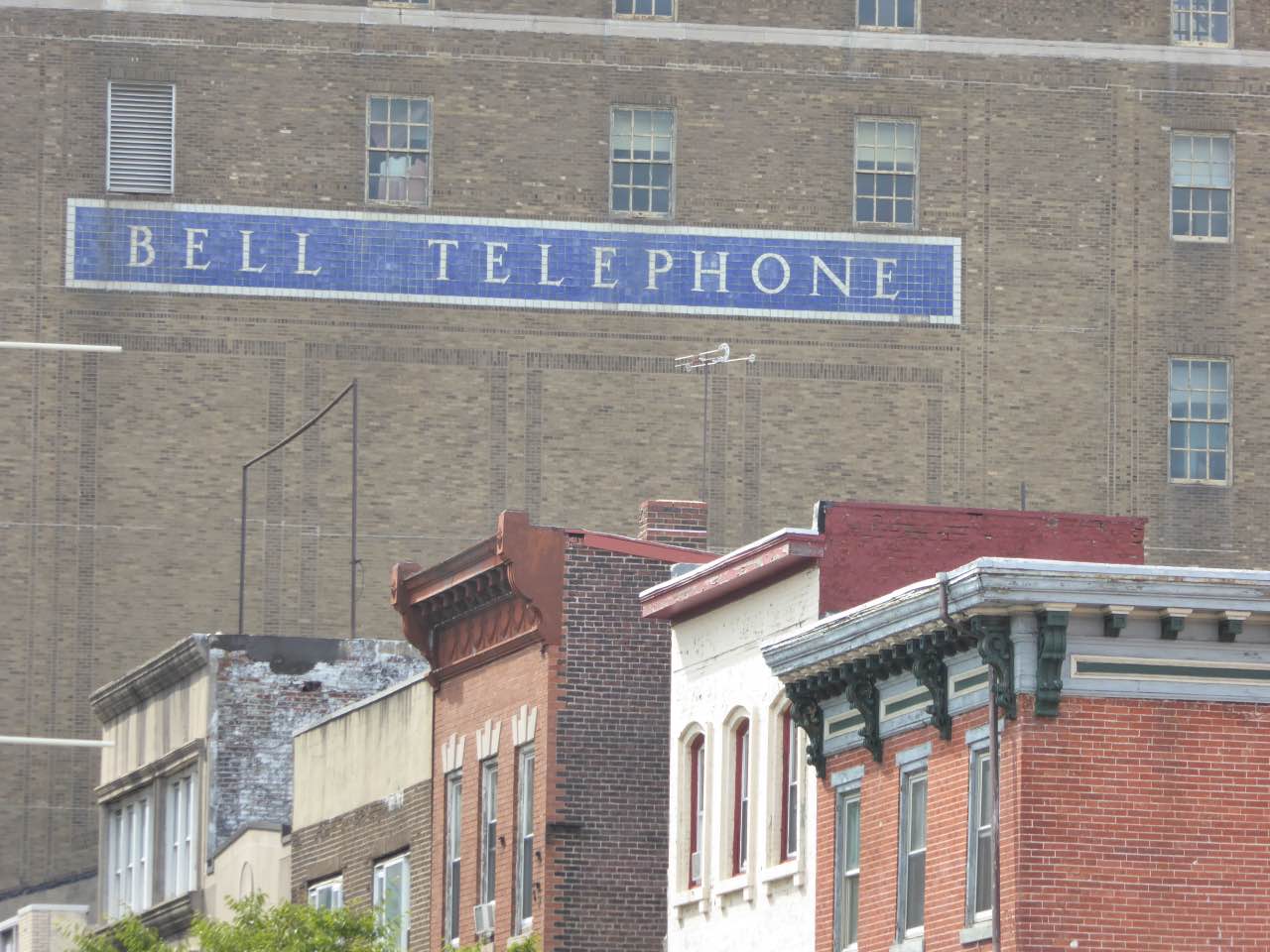
Another noteworthy ghost sign in Trenton can be seen from several blocks away. Located near the top of the eastern side of the seven-story building at 216 East State Street in Downtown Trenton is a sign reading ‘Bell Telephone’. Another sign with the same name can be found today at the street level. Although this building is currently vacant and owned by the City of Trenton, it was once a center of the telecommunications industry in the capital region.
According to records from the National Park Service (NPS), the classical revival building was “built in four stages between 1913 and 1948,” and contained the Bell Telephone Company’s Trenton Central Office telephone exchange facility. It was designed by John T. Windrim, who was also the architect of Philadelphia’s Franklin Institute, and the sign on the side of the building is situated against blue and white glazed tiles, according to the NPS form.
The building “kept Trenton connected to the rest of the country” and was “the primary exchange for Trenton and many surrounding communities,” the NPS form states, though it began to see far less use in the middle and late 20th century as suburban facilities opened. Eventually, it shut down altogether in 1990.
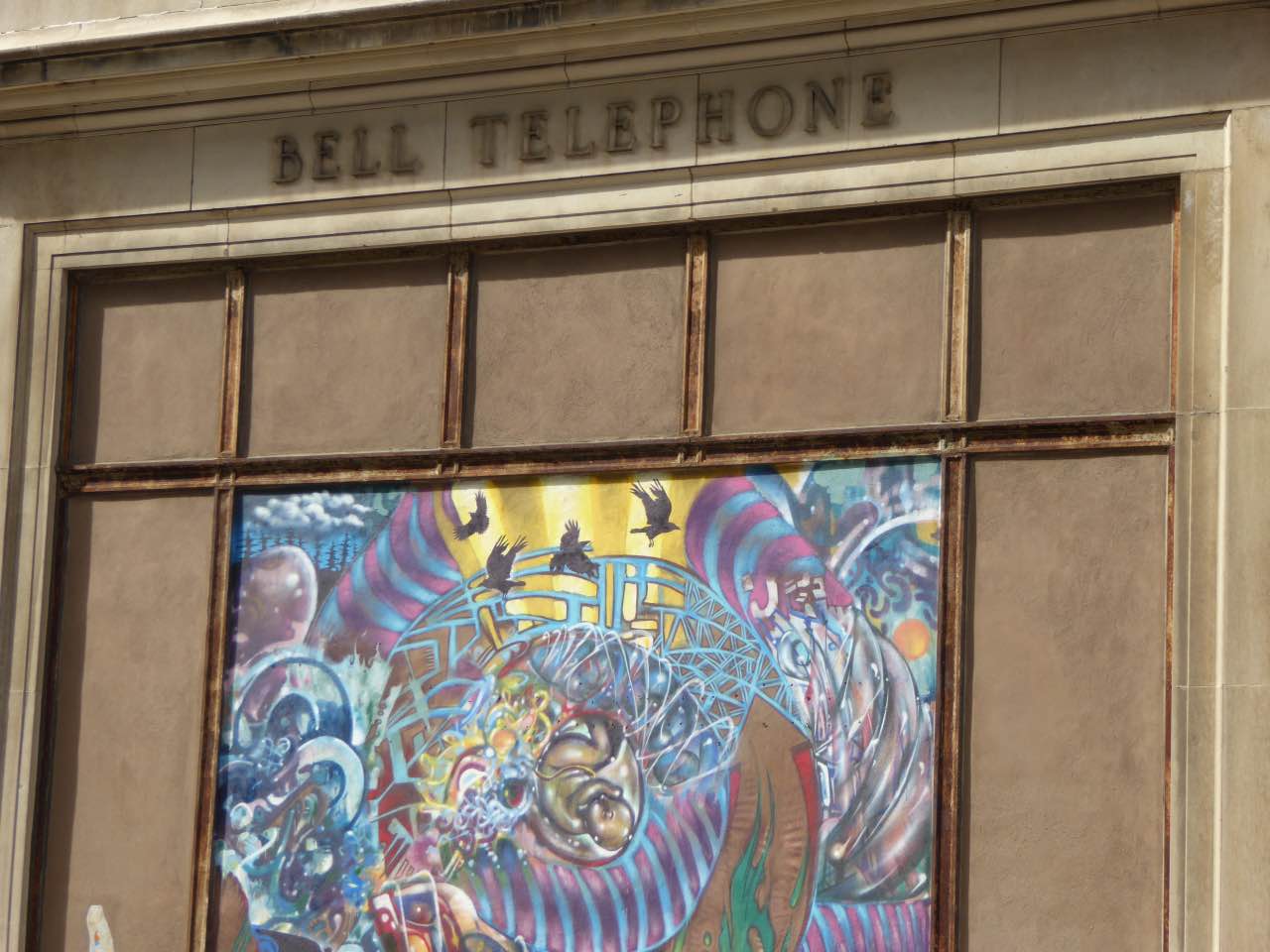
Currently, the building features the ‘Windows of Soul’ murals developed by the artists of the SAGE Coalition, and the interior is slated to be revitalized. According to The Times of Trenton, there were plans announced in 2015 for a new YMCA fitness center, office spaces, retail space, and 80 apartments inside. The structure is being considered for addition to the National Register of Historic Places, according to the Federal Register.
Trenton Trust Company
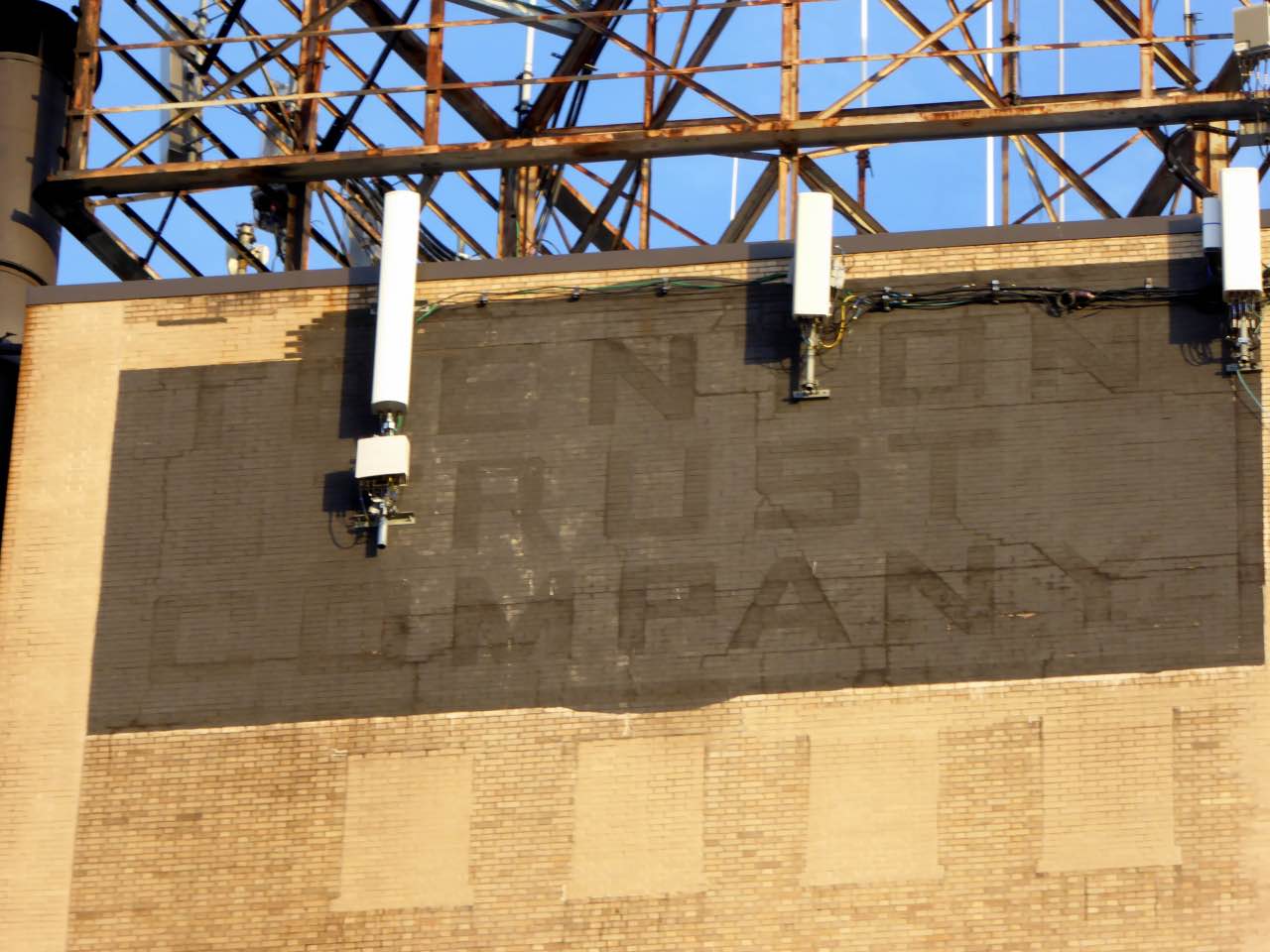
At 28 West State Street is the Trenton Trust Company building, where there are several signs of the financial institution that once occupied one of the city’s tallest structures. Atop the building facing west is a sign reading ‘Trenton Trust Company’, and at the street level, there are signs advertising ‘Estates and Trusts’ and ‘Safe Deposit and Storage Vaults’. Plus, between the second and fourth floors, there is both an additional sign with the bank’s name as well as ‘E Pluribus Unum’ inscriptions, images of the Brooklyn Bridge and other scenes inscribed into the facade, and an inscription reading that the building was erected in 1924.
The Brooklyn Bridge image is a reminder of Trenton resident John A. Roebling, who designed the bridge and established companies in the city. In fact, according to The Trentonian, the Trenton Trust Company was the Roebling family bank, and Mary Roebling became the company’s president in 1937. At the time, “no woman had ever been in charge of any metropolitan bank in the United States,” according to the paper. In 1972, the bank merged with the Union County-based National State Bank, according to The Rutgers Scholar.
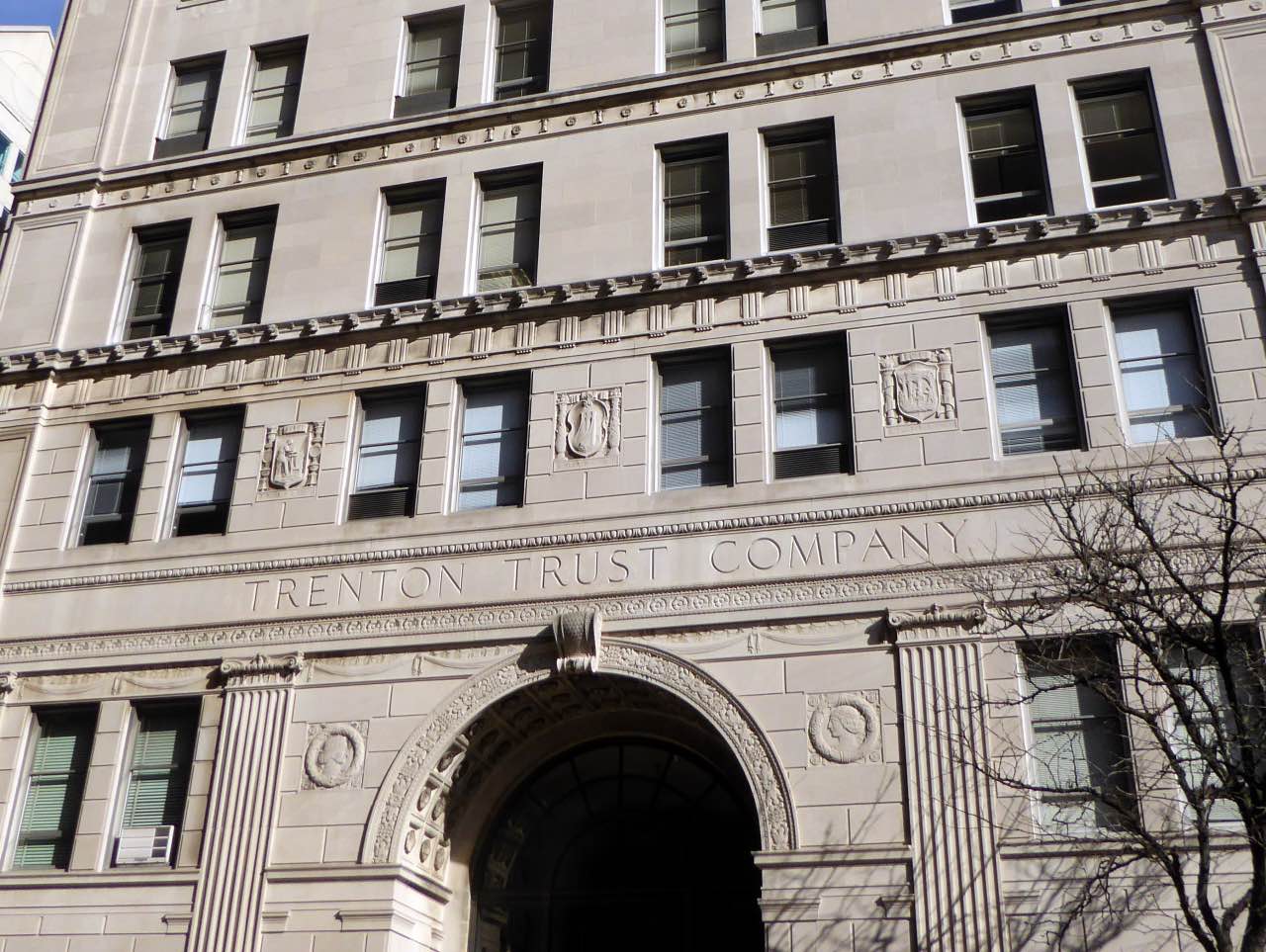
Unlike the former Bell Telephone building, this building remains utilized and is currently owned by PSE&G. It contains offices of the New Jersey Election Law Enforcement Commission, the New Jersey State Ethics Commission, and other agencies and organizations.
D.H. Brand & Co.
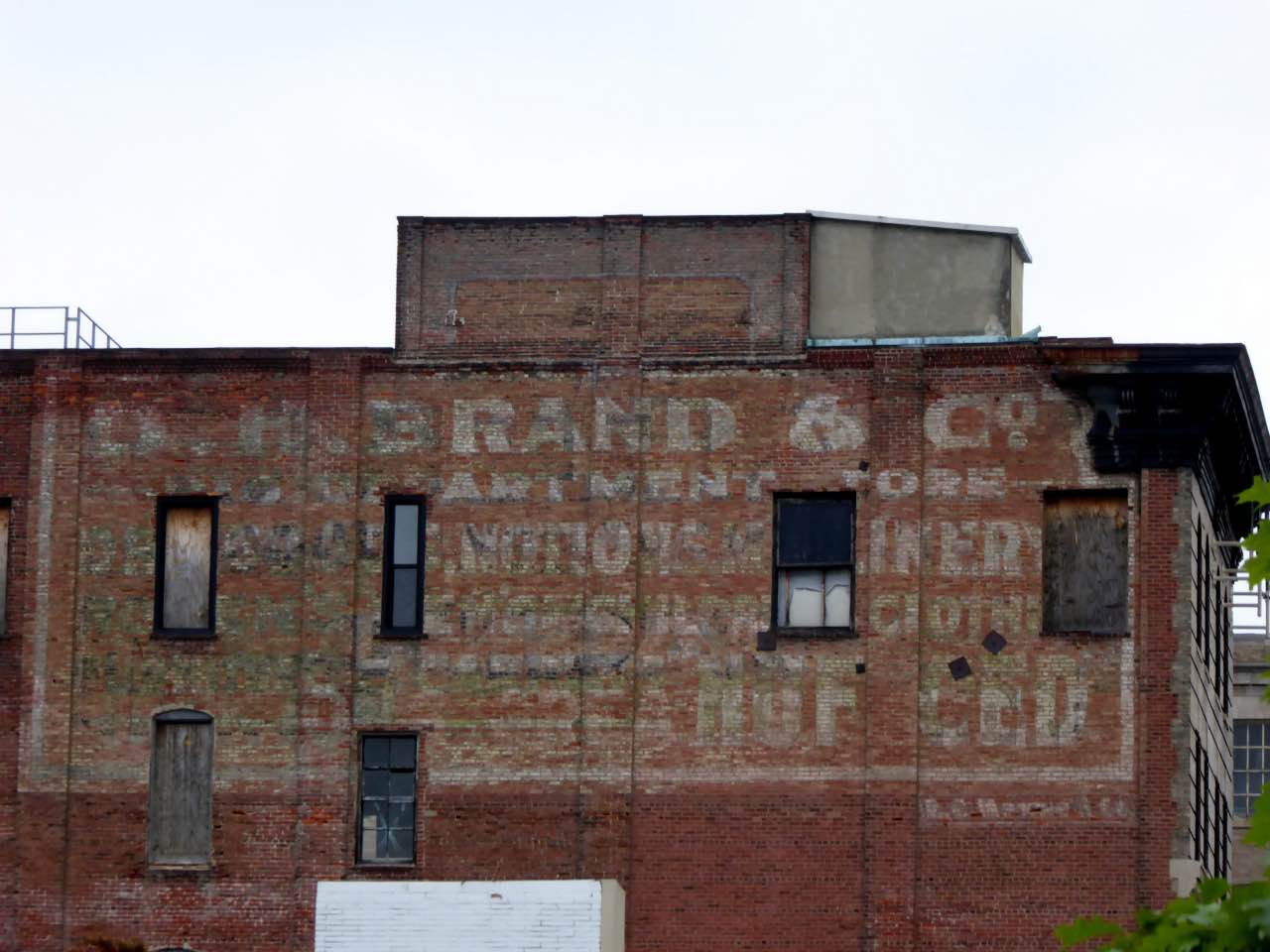
Also in Downtown Trenton, at the western side of the vacant City-owned Commonwealth Building at 150 East State Street, there is a fading advertisement for the D.H. Brand & Co. Department Store that once operated inside at the turn of the 20th century. According to the Trenton Historical Society, the department store was built at the site of the old City Market.
Records from the Library of Congress show that the store sold furniture, and a 1906 issue of the Fairchild Company’s Menswear report states that D.H. Brand & Co. was a member of the Merchants’ Association of Trenton. A 1907 report from the Trenton Evening Times shows that the business was owned by David H. Brand, who, along with his brother John, was found guilty after a 5.5 week trial and sentenced to seven years in state prison for setting fire to his own store, causing $20,000 in damage.
Perry Street Terminal
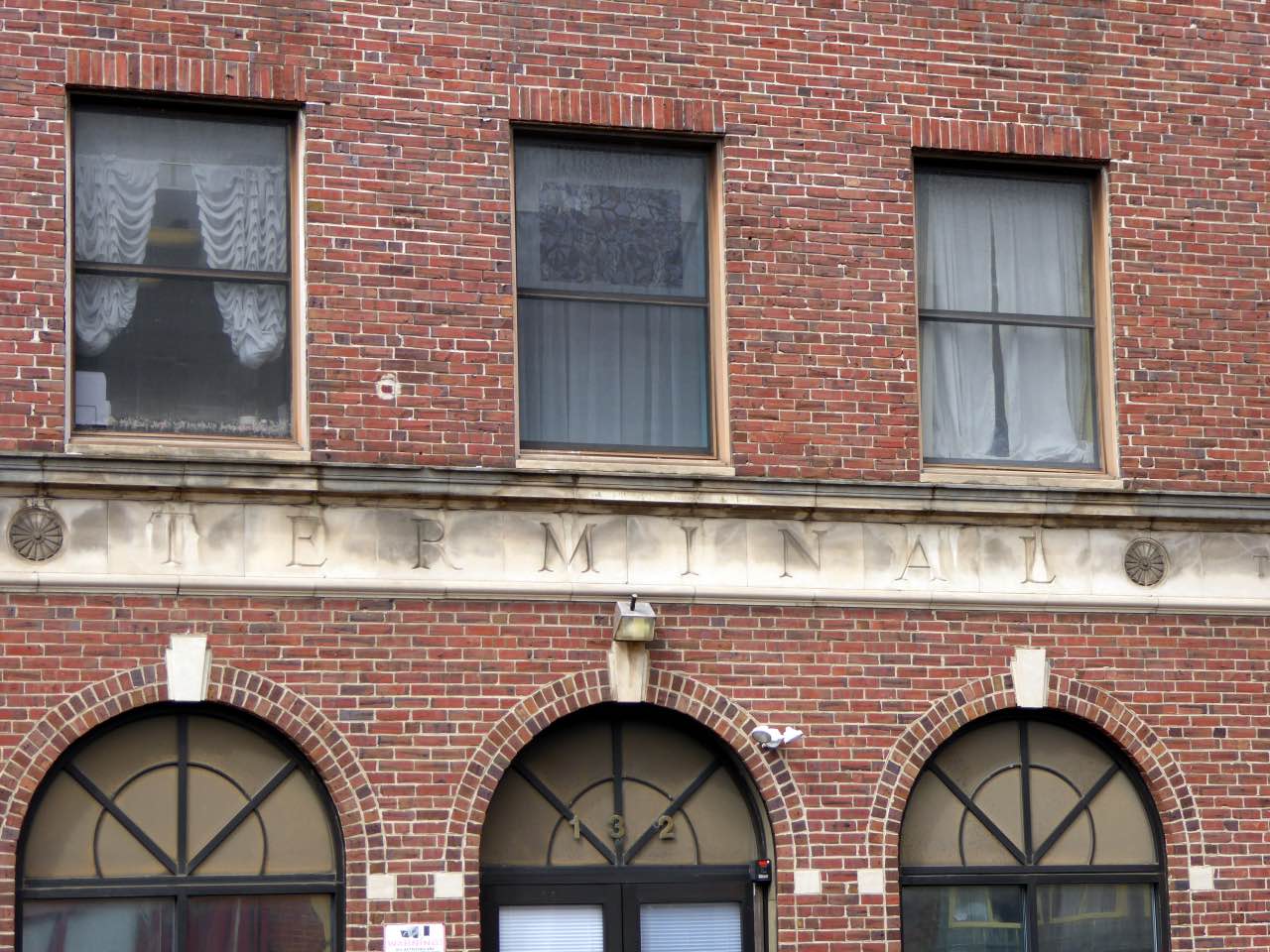
Currently, unlike many other New Jersey cities, there is no operating bus terminal building in Trenton. However, this was not always the case in the state capital. At 132 Perry Street, there is a three-story building with the words ‘Terminal’, ‘Trolley’, and ‘Motor Coach’ inscribed above the first floor on the facade.
Originally, this was a trolley terminal, and according to The WPA Guide to New Jersey, by the mid-1930s, this structure contained the terminal used by the Trenton Transit Co., which operated interurban bus lines for 10 cents a ride. There was also a machine shop used by the Trenton Transit Co. at the site, according to the Engineering News-Record, and Capital Transit later utilized the space. In the terminal’s later years, long-distance Trailways bus service stopped there.
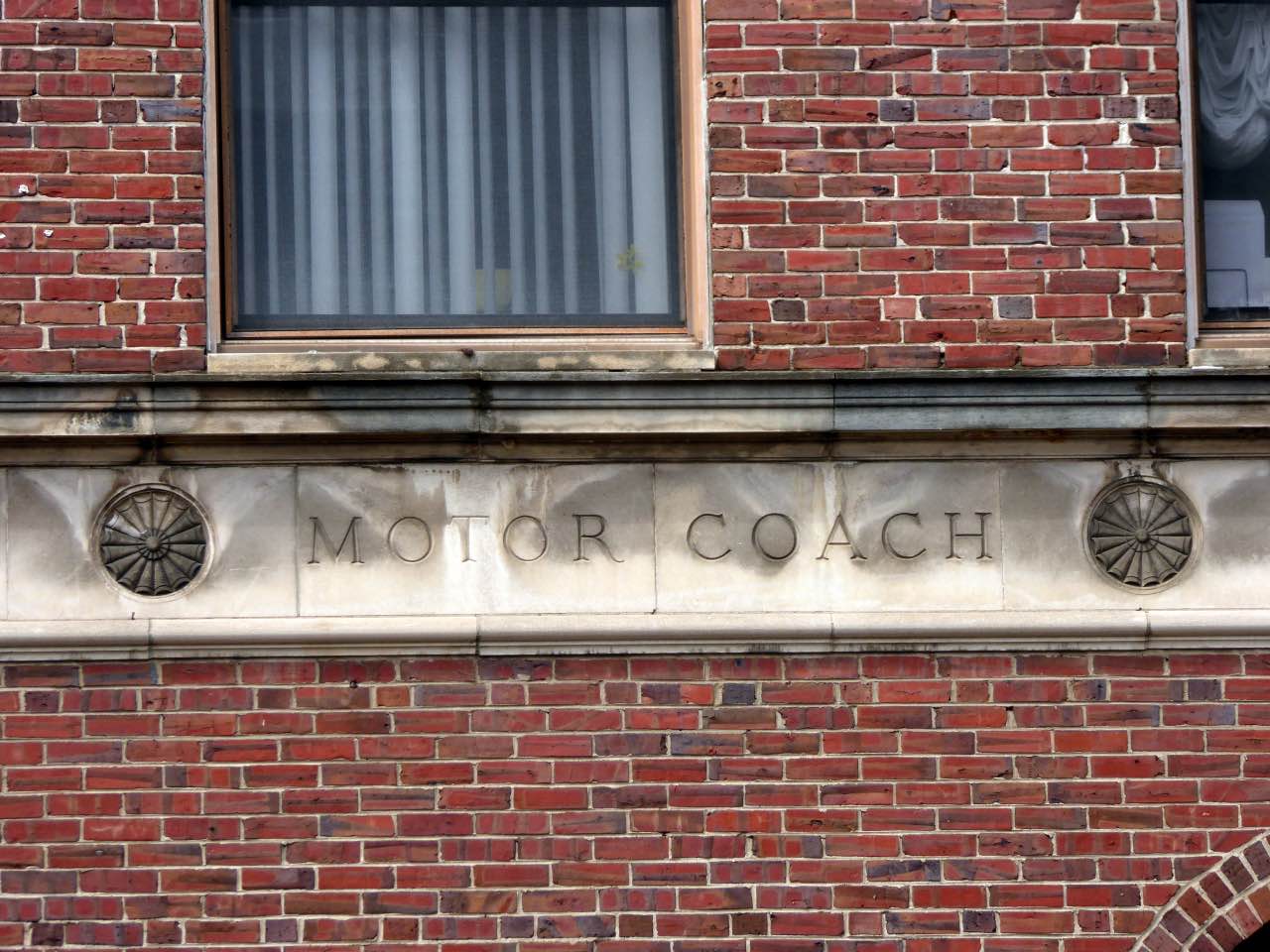
Plus, according to a 1934 issue of the New Jersey State Teachers College and State Normal School at Trenton’s State Signal, which is now The Signal newspaper at The College of New Jersey, there was a shoe repair shop within the bus terminal building and a barber shop that operated next door. The Terminal Diner also operated adjacent to the building.
Today, public bus service operated by New Jersey Transit still operates along Perry Street, and the closest mode of public transportation to a trolley that still runs in Trenton is the River Line light rail. The former Perry Street Terminal currently contains New Horizon Treatment Services.